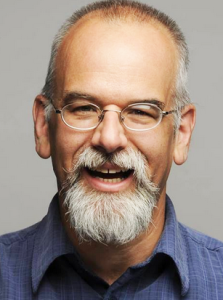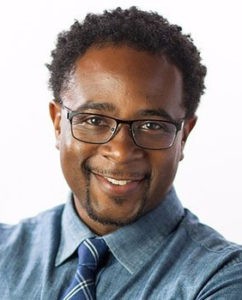Demographic shifts, rising political polarization and heated debates over sexuality and race pose existential threats to the American church because they cannot be tackled individually, according to veteran religion writer Bob Smietana.
“It’s not that one thing after another is changing. It’s that everything is changing at the same time and people don’t know how to keep up,” Smietana said during an Aug. 11 webinar launch of his book, Reorganized Religion: The Reshaping of the American Church and Why it Matters.
Helping Smietana describe the plight of U.S. churches were fellow panelists Jemar Tisby, a New York Times bestselling author, speaker and historian; Scott Thumma, a sociologist and director of the Hartford Institute for Religion Research at Hartford International University; and Phil Vischer, a filmmaker and creator of the VeggieTales children’s series. RNS national reporter Adelle Banks moderated the session.

Bob Smietana
Smietana has documented the decline of organized religion as national reporter for Religion News Service and other publications over the past 20 years. But he said the trend hit home personally with recent news about Grace Covenant Church, a once vibrant and ethnically diverse Chicago congregation he once attended.
“I got a letter from the church that read, ‘We regret to inform you that our congregation has decided to close.’ As you can guess, the years have not been great for churches and Grace has not been immune from some of the changes.”
With additional factors such as the COVID-19 pandemic, the loss of trust in religious institutions and declining faith among younger Americans also banging on the door, a lot of pastors and lay Christians are perplexed, Smietana said.
“Many churches are like this. People are wondering: Is this sustainable? Are we going to be able to stick around?”
Answers are partially evident in the decline of church membership from an average of about 137 peopole two decades ago to 65 people today, he said. Thumma added that 30% to 40% of all U.S. congregations are predicted to close in the next 20 years.
Smietana said the repercussions of those continued closures will be felt beyond religious circles: “Churches play an important role in the lives of their congregation and in their communities.”
When churches close, “Who’s going to resettle the refugees? Who’s going to be there when people show up in trouble and looking for a helping hand? Who’s going to gather friends together? Who’s going to run food pantries? Who’s going to run shelters and all the work that churches do?”

Jemar Tisby
Tisby emphasized the influence of rising racial tensions as a key contributor to the church’s accelerated decline in recent years. Repeated acts of police brutality directed against Blacks, the 2017 Unite the Right rally in Charlottesville, Va., and evangelical support for Donald Trump divided Americans along racial lines like never before and created an exodus of Black Christians from white churches.
“All of that was, in the old-fashioned sense of the word, apocalyptic in terms of revelatory. It revealed a lot,” he said.
Another revelation was how quickly and deeply Americans could further carve up Christianity, Vischer added. “What’s been wild to watch, particularly since 2015, is churches finding another axis to divide over that has nothing to do with theology.”
This drives Christians to seek congregations that line up with their politics as well as their religious beliefs, he explained. “We’re finding new ways to dislike each other, and that’s really been the most upsetting thing. There’s an idolatry of politics that has made it impossible for many of us who were fine worshiping together to continue worshiping together.”

Phil Vischer
As a result, the damage to the church will continue into the future, Vischer predicted. “Our kids find it preposterous. The next generation finds it embarrassing that this is what we’re fighting over. They don’t want anything to do with it, and that should be the biggest concern.”
Thumma said he does not believe the future of American Christianity lies solely with the dominance of the megachurch.
“We’re starting to see now a real change of people innovating the old models of gathering and doing religious life together,” he said. “There will be the megachurches because megachurches have become one of those models. But we’re also seeing dinner churches. We’re seeing third-space kinds of churches. We’re seeing all kinds of digital and virtual realities. We don’t know which of those models is really going to fit in the future. And because we have such a divided culture and subcultures, I think we’re only going to see a plethora of different ways of being the church.”
Related articles:
Churches must learn to adapt to ‘permanent transition,’ Leonard stresses
Ryan Burge sifts the data to paint an evolving portrait of the ‘nones’
Progressive Baptist congregation on Wake Forest campus votes to close


